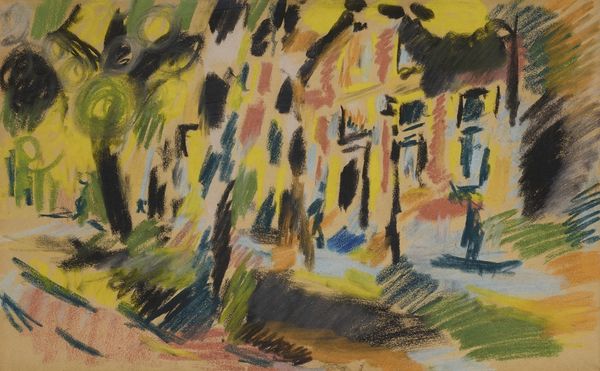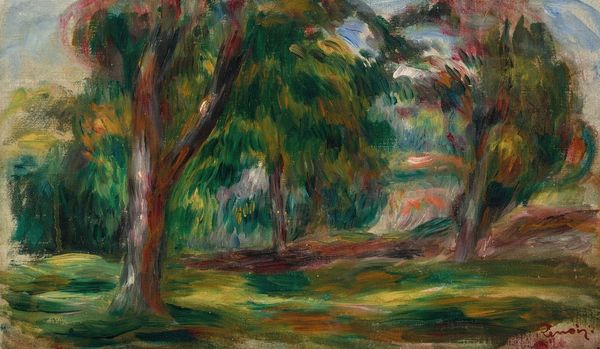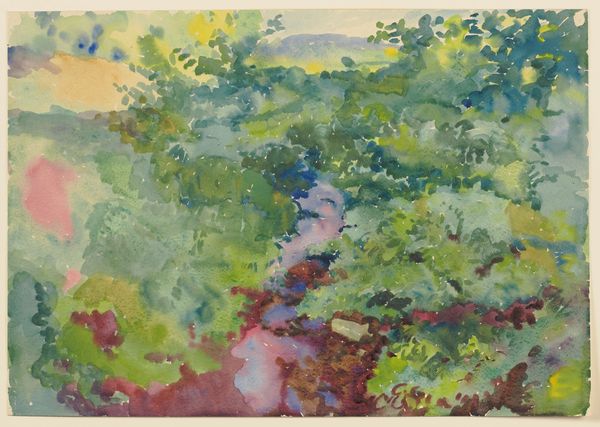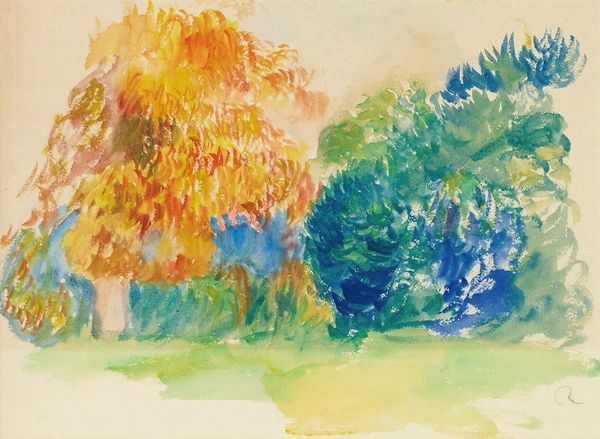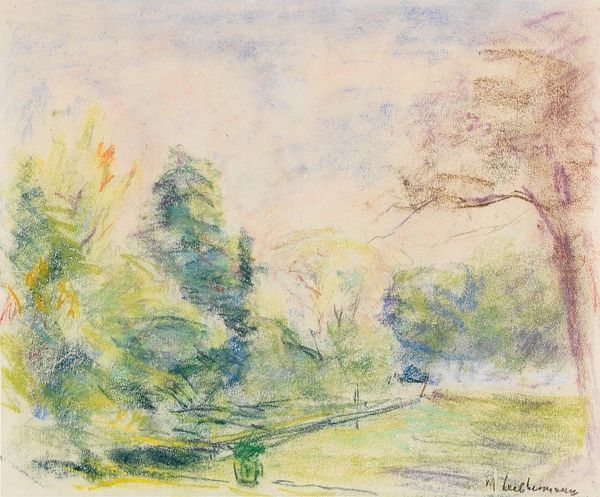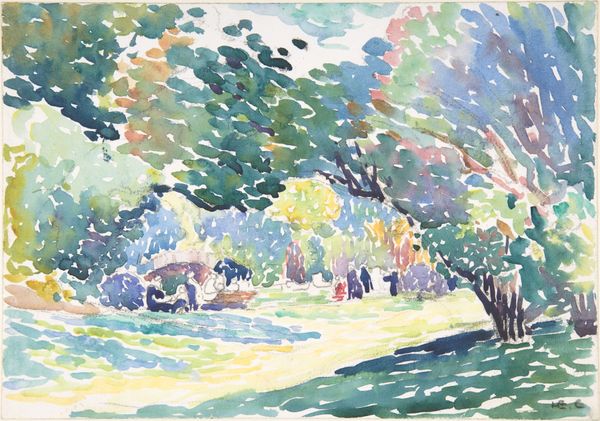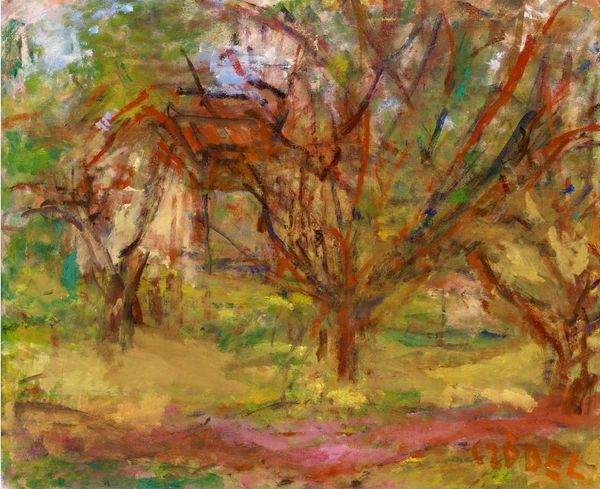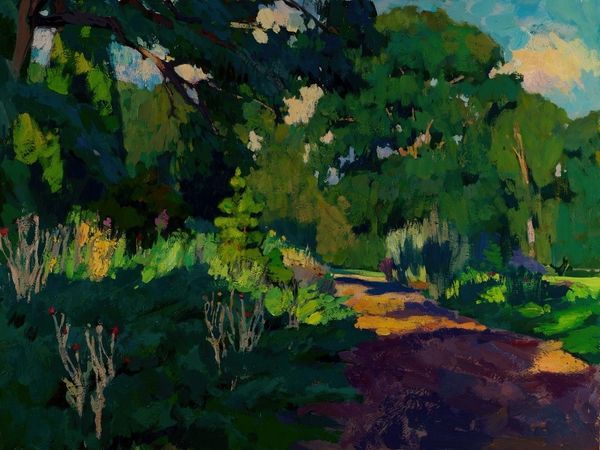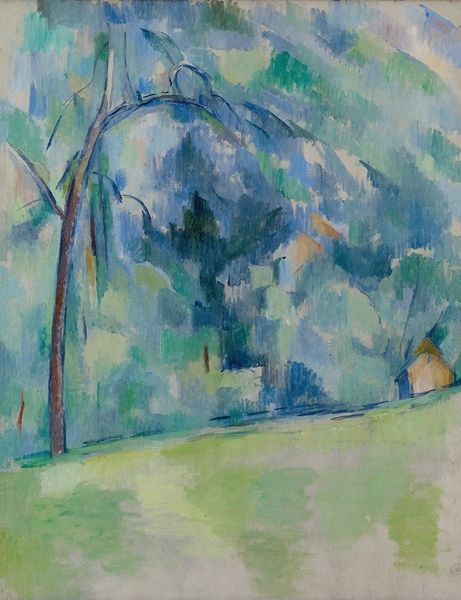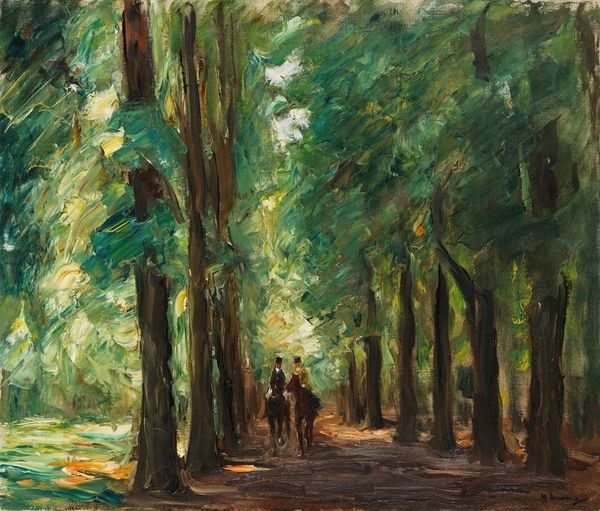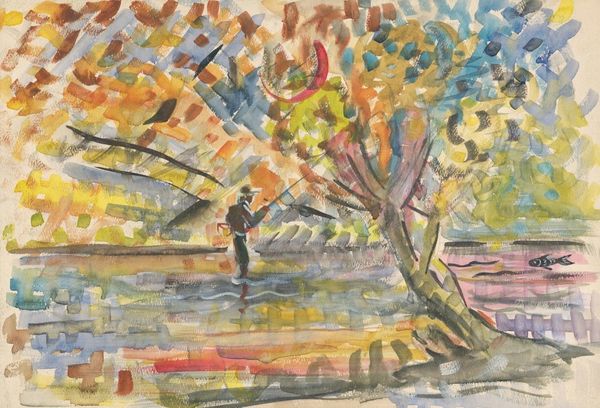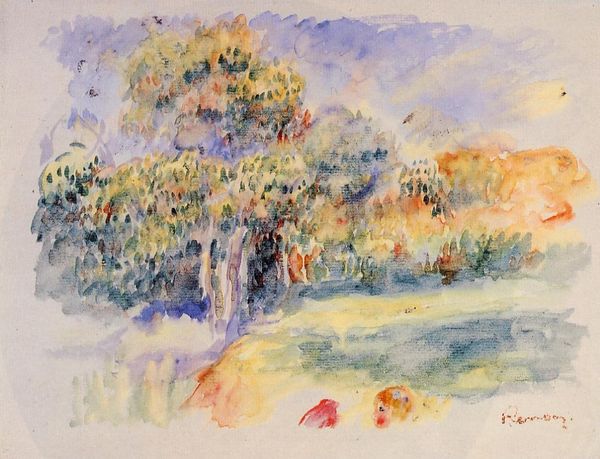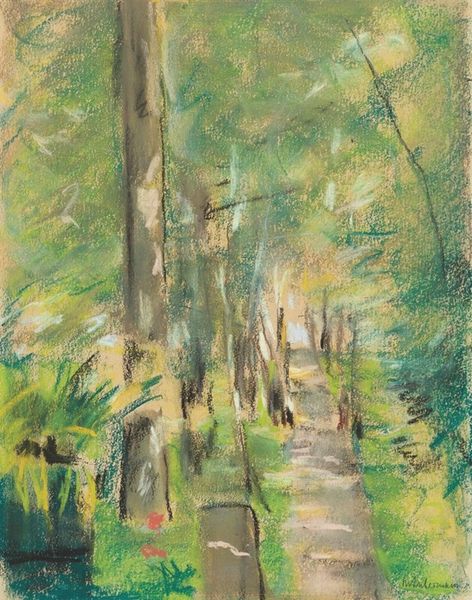
Copyright: Public Domain: Artvee
Curator: This is “Allee mit zwei Reitern,” or “Avenue with Two Riders,” created in 1911 by Max Liebermann. It's an impressionistic landscape rendered in pastel, showcasing Liebermann’s signature plein-air style. Editor: It has a hazy, dreamlike quality. The blues and greens seem to envelop everything, like a memory fading at the edges. The riders, two indistinct figures, feel almost spectral. Curator: Liebermann was a prominent figure in German Impressionism, advocating for its acceptance against the more conservative art establishment of the time. He embraced capturing scenes of everyday life and the vibrant energy of public spaces. Editor: The image has a distinct sense of ambiguity, though. Are the riders moving towards or away from us? There's something intriguing about the tunnel effect created by the trees, as if it is symbolic of transitioning towards a unknown. Curator: Precisely. Liebermann was known to paint scenes of leisure that spoke to evolving societal structures, like a middle class taking part in outdoor life, enjoying open, formerly royal spaces. This particular artwork might reference the shift toward modern life, the riders could represent those involved in these public spaces, almost like everyday protagonists. Editor: The limited palette adds to that sense of melancholy. Blue often signifies introspection, or a feeling of the untouchable. Paired with the somewhat blurry figures, this speaks to the themes of anonymity. Curator: I see this more like a study on light. See how Liebermann contrasts dark shades under the cover of trees with open brighter sky. He was devoted to the art of plein-air, after all. Capturing momentary experiences and atmospheres would be right at home with the Impressionists who were experimenting in France at the same time. Editor: Fair point. Liebermann has certainly found a delicate balance here. He shows both a slice of passing modern life with a careful examination of what an ordinary afternoon might really signify for modern subjectivity. It almost feels like gazing into another person’s fleeting memories. Curator: Indeed. This piece acts as a window into the era's changing social landscape, filtered through Liebermann's personal experience of it. Editor: It's fascinating how an ostensibly simple scene can evoke such contemplation of modernity, memory, and personal identity, when seen through its unique application of symbols and cultural themes.
Comments
No comments
Be the first to comment and join the conversation on the ultimate creative platform.
